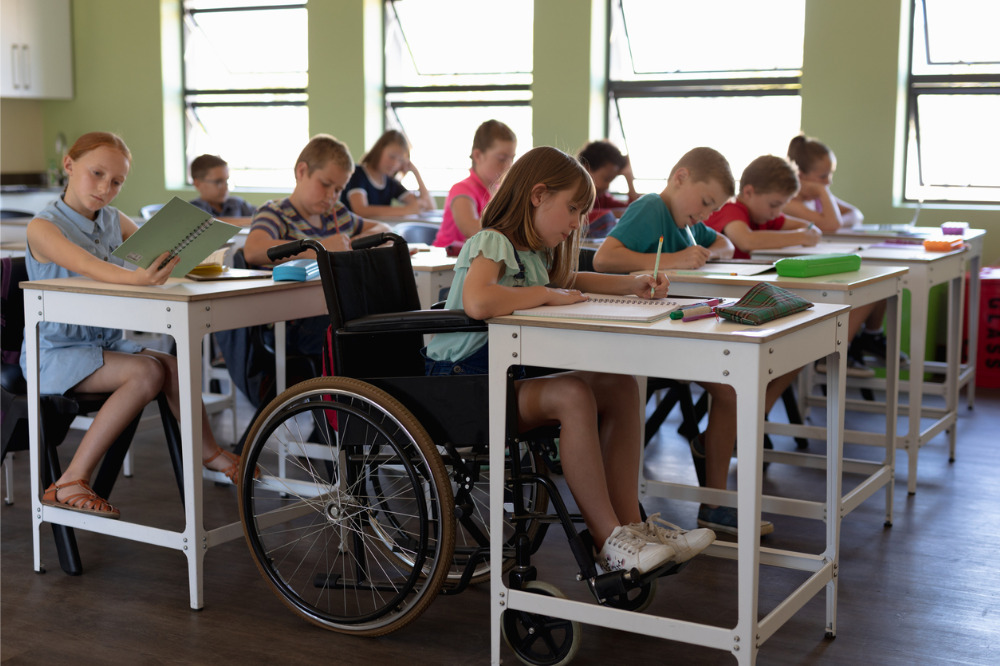
In NSW, the overwhelming majority of students with disability (86%) learn in mainstream classrooms, while Schools for Specific Purposes (SSPs) educate around 3% of students with disability.
To ensure the state’s schools remain inclusive for children with a disability, the NSW Government began implementing its new Inclusive Education Policy from Term 3, 2022.
However, a new investigative paper purports to have exposed “the depths of exclusion, frustrating complaints processes and the impacts of systemic disadvantage on both students and schools” within the state’s education system.
The paper ‘Falling behind: A need for inclusive education’ which was produced collaboratively between Family Advocacy and Disability Advocacy NSW, found students with disability are often excluded from classroom activities due to low funding, staff and resource shortages and lack of capacity, while other schools lacked expertise, knowledge or skills to provide inclusive education.
The core issues inhibiting inclusive education include some schools refusing to provide adjustments without providing a clear reason and a lack of accountability in the complaints process. The report noted how families and students experience “a lack of due process” and feel that the outcome is “disproportionally geared in favour of the education system”.
Other inhibitors include schools ‘babysitting’ students with disability rather than educating them, unfair suspensions and forced part-time attendance, and gaps in service systems where families are left to fill in the holes.
‘The current system is not fit for purpose’
Leanne Varga, Systemic Advocate at Family Advocacy said while the new inclusive education policy has good intentions to attempt to address the issues laid out in the new investigative paper, good intentions are not enough.
“The current education system is not fit for purpose as it continues to segregate more than 26,000 students and requires an overhaul so that students with disability are included meaningfully in schools,” Varga told The Educator.
To properly address the issues raised in the new paper, in the lead up to the NSW election, Family Advocacy's campaign has called on the NSW government to commit to an ‘Inclusive Education Roadmap’ with a long term vision that will strengthen the system’s capability including supporting teachers so students with disability can access and participate on the same basis as other students. Read more here.
The organisation is also calling on the government establish an ‘Invest in a Work Transition Pilot Project’ to improve the transition of young people with disability from education to employment.
‘We just need to find the right approach’
Beyond NSW, there are signs that the push to provide an inclusive education in schools faces an uphill battle.
New research from Griffith University’s Associate Professor Stuart Woodcock reveals less than 50% of Brisbane secondary teachers believe in an inclusive classroom.
In the survey of 12 Brisbane high schools and 182 teachers, results revealed just 47% of all teachers believed inclusive classrooms were an effective way to teach all students. That figure rose to 60% for beginner to intermediate* teachers (*less than 10 years experience) but fell to 37.5% for experienced (10 plus years experience) teachers.
“Inclusivity in high school is possible, we just need to find the right approach,” Professor Woodcock said.
“Our research is focussed on finding out how we do inclusive education better in a primary and high school setting so that we get the best our of diverse classrooms for all students.”
As part of an international study with Monash University, the researchers from Griffith University identified inclusive schools in different Australian states and had a roundtable discussion with the principals to see how they are making their schools inclusive.
“We’re interested to find out what their approach is. What we need to understand is, which schools are inclusive? What are they doing? and What is working?” Professor Woodcock said.
“We plan to speak to parents, students, teachers, principals, and the community. Inclusive education is a collective proposition, it's important to include multiple perspectives in the study.”
Giving kids a sense of belonging is key
Varga said that moving forward in 2023, school leaders can ensure all children feel welcomed and have a sense of belonging by creating an inclusive culture at a whole-of-school level.
“This means creating an inclusive culture of putting inclusive values into action and producing inclusive policies that value diversity,” she said.
“Principals also need to make sure their school makes changes to meet the needs of students with a disability. Principals should also support teachers to learn about evolving inclusive practices such as having the Universal Design for Learning embedded in the classroom.”
Principals should also be promoting good collaboration within the school’s community and using helpful resources that already exist, said Varga.
“Some of these include Conversations for Collaboration, a student-centred approach to parent educator collaborative engagement, co-designed by NSW educators and parents of students with disability,” she said.
“Good parent/school relations can also be prompted by encouraging a P & C Inclusion Subcommittee where parents can identify common issues and collaborate to improve their local school.”


